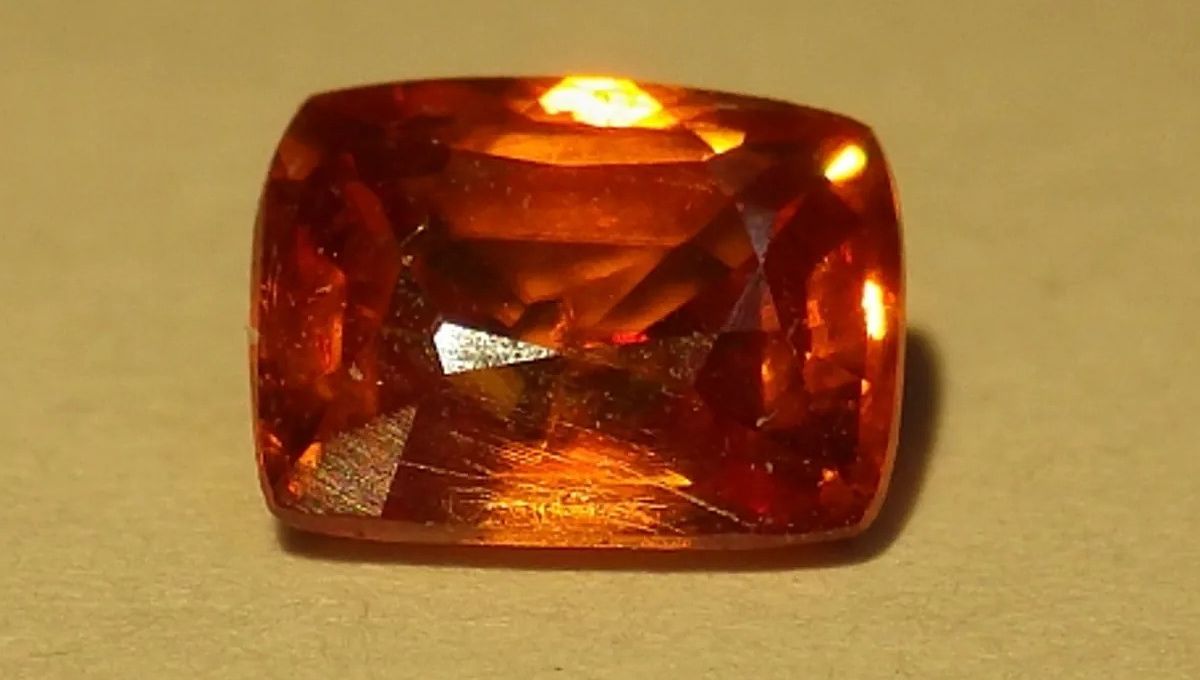
When people want to possess something unique it usually has to be human-made, not a piece of the Earth. After all, we live on a large planet, and if geologic forces produce a particular mineral in one spot, there’s a pretty good chance they will make it somewhere else as well. Indeed, of the 6,000 minerals recognized by the International Mineralogical Association (IMA), many are formed by multiple processes, with quite different chemistry leading to identical outcomes.
Even if a mineral did only form once, samples could easily be broken up and dispersed over a wide area. Consequently, it’s somewhat remarkable any mineral would be known from just a single sample. However, that’s the case for one crystal, kyawthuite.
Kyawthuite has only been found in the form of a single gemstone from near Mogok, Myanmar, and was recognized by the IMA in 2015. An almost identical synthetic compound was already known, so if you badly want some, you don’t need to steal the single specimen from the Natural History Museum of Los Angeles County, where it is stored.
Kyawthuite is a transparent reddish-orange and the single specimen weighs 1.61 carats (0.3 grams). The chemical formula is Bi3+Sb5+O4, with traces of tantalum. Both bismuth and antimony (yes Sb is the chemical symbol for antimony because why make things easy) are rare metals, but not extraordinarily so. There’s more bismuth in the Earth’s crust than gold, while antimony is more abundant than silver. Oxygen is the crust’s most abundant element, so Kyawthuite’s rarity must relate to the method by which it formed, rather than a shortage of its ingredients.
Bismuth is such a heavy element that the density of kyawthuite is more than eight times that of water (and double that of the rubies it slightly resembles), so the stone is even smaller than its weight would suggest. Caltech’s mineral database describes the structure as having checkerboard sheets of octahedra Sb5+O6 parallel to Bi3+ atoms. It is the only recognized bismuth-antimony oxide and is named after Dr Kyaw Thu, formerly a geologist at Yangon University.
The kyawthuite specimen was found in the bed of a stream by sapphire hunters and approved by the IMA in 2015 as a distinctive mineral. Its scientific description was published in 2017.
Interestingly, Myanmar is also the source of the second rarest mineral, painstone, a gemstone with only a handful recorded. Speaking to LiveScience, Caltech Professor George Rossman attributed the abundance of gemstones in Myanmar to the pressure and heat produced when India collided with Asia. Although having so many types of gems puts Myanmar in the running to have the two rarest minerals, decades of war and international sanctions make it likely a lot of examples of each are not reaching scientists.
An earlier version of this article was published in January 2023.
Source Link: This Is The Rarest Mineral On Earth, And There's Only One Specimen